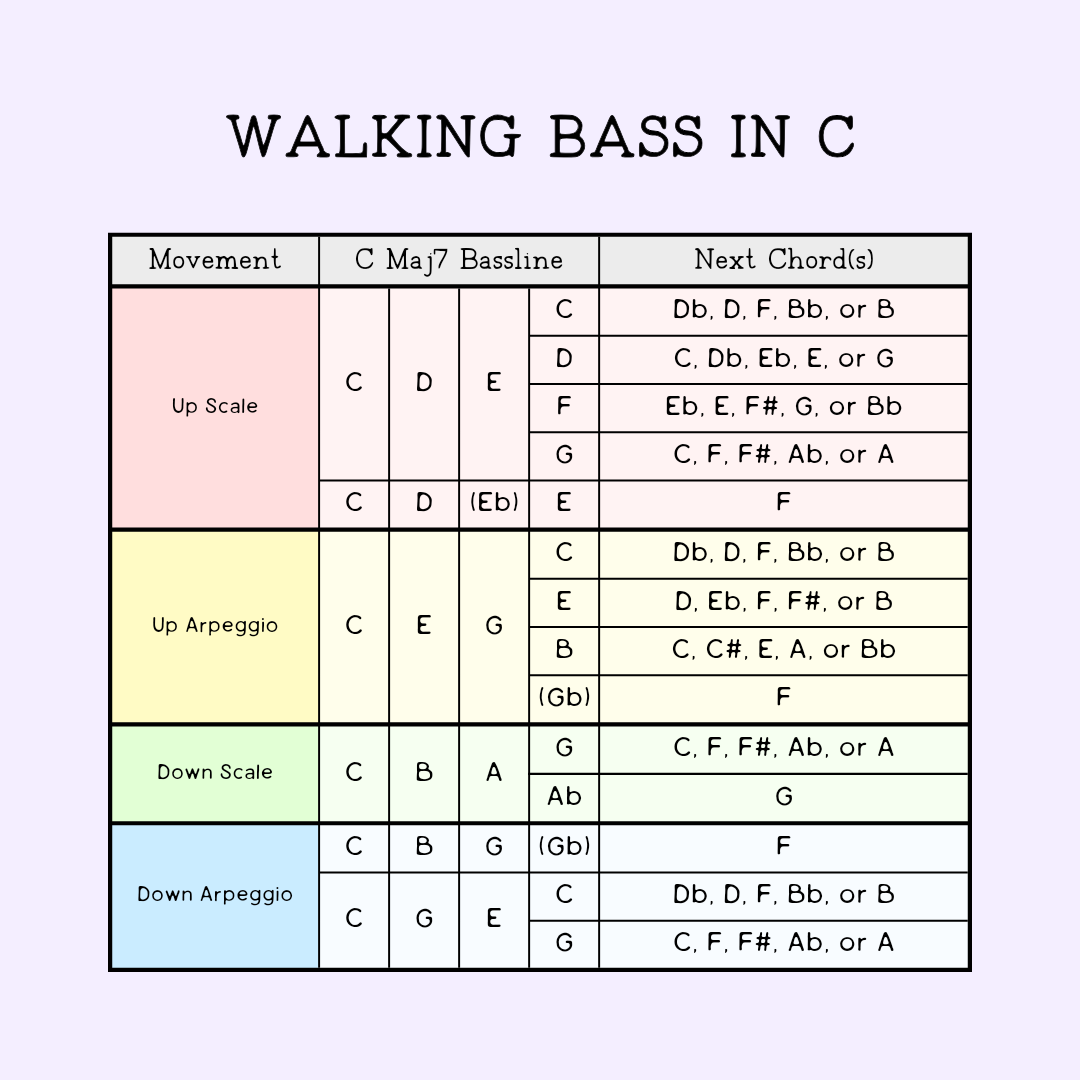Walking basslines are the heartbeat of jazz and blues, providing a rhythmic foundation that propels the music forward. By exploring four fundamental patterns—up the scale, up the arpeggio, down the scale, and down the arpeggio—you can add variety and depth to your bass playing. Let's dive into these patterns using the C7 to F7 progression, a staple in the 12-bar blues in C.
1. Up the Scale
Starting with "up the scale," this pattern involves ascending notes within the scale that corresponds to the chord. For a C7 chord, a simple yet effective line could be C-D-E♭-E (1-2-♭3-3). This sequence introduces a chromatic/double leading tone (E♭ to E), adding tension and release as we approach the next chord, F7. This approach not only adheres to the chord tones but also incorporates passing tones, enriching the bassline's texture.
2. Up the Arpeggio
Arpeggios are the backbone of harmonic understanding on any instrument, and walking basslines are no exception. The pattern "up the arpeggio" for C7 could be C-E-G-G♭ (1-3-5-♭5). By moving from the root to the fifth and briefly touching upon the ♭5 (a classic blues and jazz tension note), we create a line with strong harmonic definition and a slight bluesy edge. This pattern emphasizes the chord's structure, grounding the listener's ear in the harmony.
3. Down the Scale
Conversely, "down the scale" involves descending through the scale. For C7, a walking line might be C-B♭-A-G (1-♭7-6-5), beginning on the root and stepping down to the dominant chord's fifth. This pattern provides a sense of resolution, guiding the listener's ear back to a solid harmonic point. The use of the ♭7 (B♭) introduces a bluesy feel, essential for jazz and blues genres.
4. Down the Arpeggio
Finally, "down the arpeggio" takes us through the chord tones in reverse order. A C7 arpeggio descending could look like C-B♭-G-E (1-♭7-5-3). This line solidifies the chord's structure in the listener's mind, providing a strong sense of closure and completeness before moving to the next chord. It's a classic approach that highlights the harmony's stability and depth.
Applying These Patterns
Understanding these four patterns offers a framework for creating walking basslines that are both melodically interesting and harmonically rich. Practicing these over the C7 to F7 transition in the first bar of a 12-bar blues in C will equip you with versatile tools to navigate through chord changes smoothly and creatively.
Tips for Practice
Experiment with variations: Mix and match these patterns to create diverse basslines.
Use a metronome: Develop your timing and groove by practicing with a steady beat.
Listen to the masters: Study recordings of renowned bassists to hear how they employ these patterns.
Conclusion
Walking basslines are a dynamic and essential aspect of jazz and blues music, providing momentum and harmonic depth. By mastering the four fundamental patterns of walking basslines—up the scale, up the arpeggio, down the scale, and down the arpeggio—you can enhance your ability to support and enrich the music. Whether you're accompanying a soloist, anchoring a rhythm section, or exploring solo bass arrangements, these patterns will serve as a solid foundation for your walking bass adventures.

